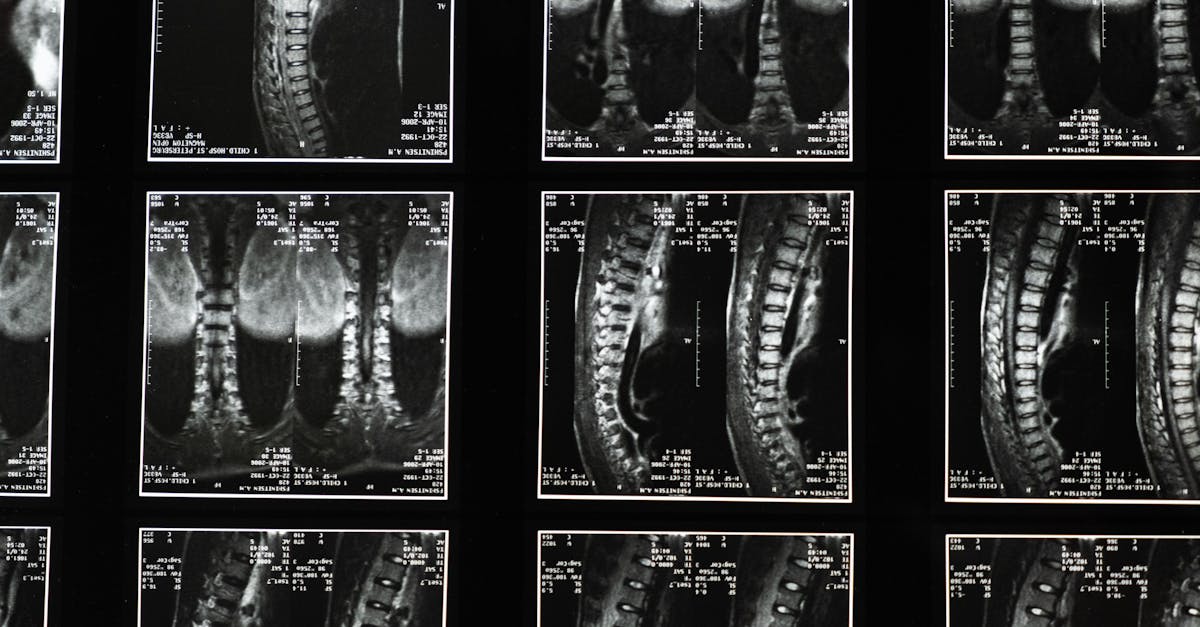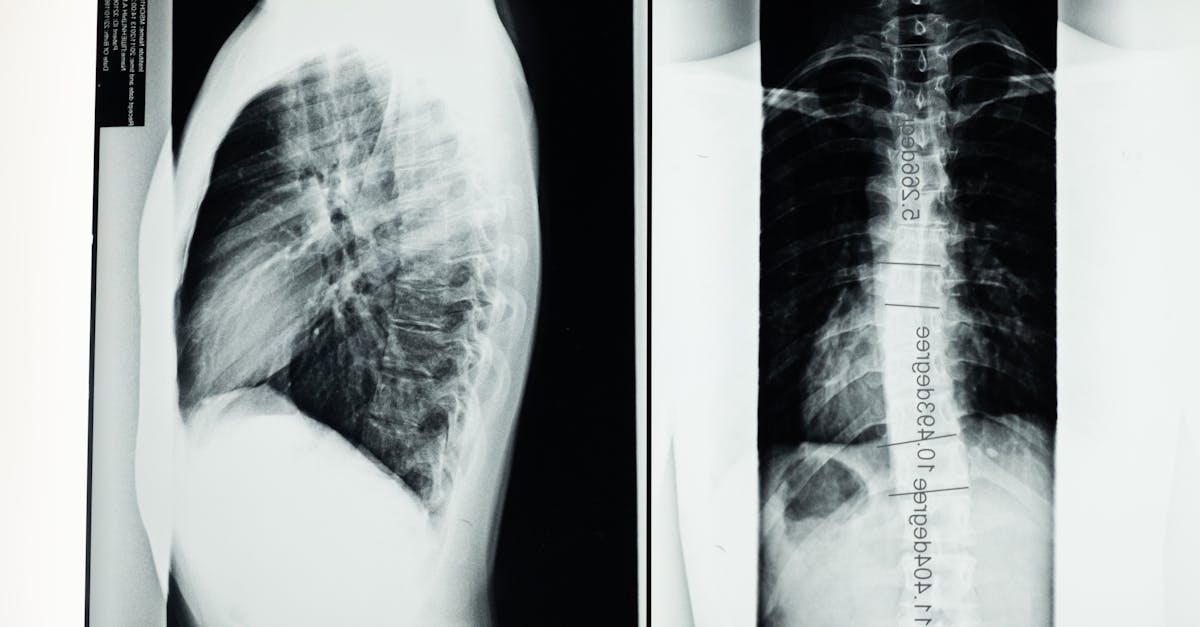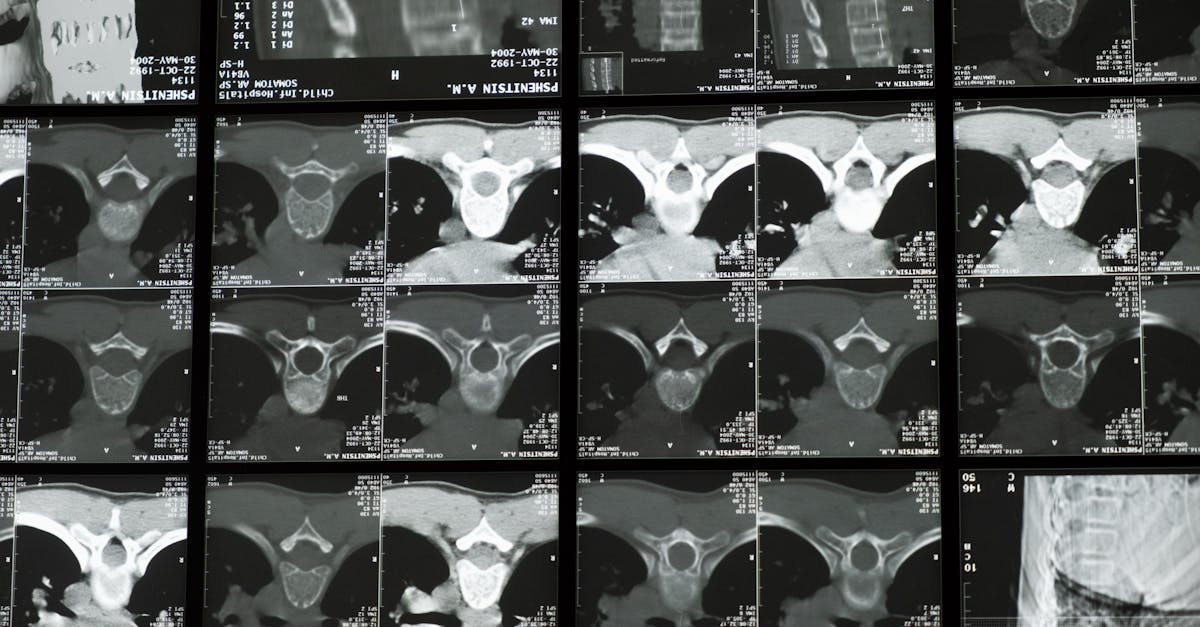|
In Short, non-invasive strategies for scoliosis prevention encompass a variety of techniques aimed at halting the progression of spinal curvature. These methods, including physical therapy, bracing, and specialized exercise regimens like the Schroth Method, promote better posture and strengthen supporting muscles. By creating a supportive framework for spinal health, individuals can experience reduced discomfort and enhanced flexibility. This holistic approach to prevention is both accessible and effective, making it suitable for individuals of all ages and lifestyles. |
Non-invasive strategies for scoliosis prevention include a variety of approaches aimed at managing and halting the progression of spinal curvature. Key interventions involve physical therapy to strengthen back muscles, bracing for support, and tailored exercise plans that focus on enhancing posture and overall spinal health. Holistic techniques like the Schroth Method promote individualized exercise regimens tailored to a person’s spinal structure. Regular check-ups and nutritional support further play a critical role in minimizing the risks associated with scoliosis. Collectively, these methods make scoliosis management accessible and effective for individuals of all ages.

Welcome to Pulse Align: Restoring Your Body’s Natural Balance
At Pulse Align, we celebrate an innovative, non-invasive approach to wellness that helps restore the body’s natural balance and posture through gentle, imperceptible pulses. This technique promotes muscle tone symmetry by addressing tension, enabling our clients to feel more aligned, comfortable, and vibrant.
Natural Recalibration for Enhanced Well-Being
Our focus at Pulse Align is not on directly addressing discomfort or tensions. Instead, we support the body’s natural ability to recalibrate itself, which often leads to an improved sense of comfort and enhanced posture. By harnessing the body’s inherent mechanisms, we empower our clients to navigate their daily activities with greater ease.
Experience Personalized Wellness
Many clients have shared transformative experiences through our gentle approach, highlighting noticeable improvements in areas such as neck and back tension and overall well-being. Individuals frequently express gratitude for the personalized attention they receive, which fosters a sense of balance and a healthier lifestyle. The feedback we receive reflects our commitment to creating an inclusive environment suitable for the entire family, from children to expectant mothers.
Explore Pulse Align Today
We invite you to visit the Pulse Align website to learn more about our unique offerings, find nearby clinics in various locations such as La Prairie, Mont-Royal, Terrebonne, and more. Booking a consultation for yourself or your family is just a few clicks away! Remember, Pulse Align complements, but does not replace, the care provided by your healthcare team. Experience our safe, non-invasive, and family-friendly approach to wellness and discover how we can support your journey toward improved well-being.
- Posture Awareness: Enhance body alignment through mindfulness and proactive adjustments in daily activities.
- Physical Therapy: Focuses on tailored exercises that promote muscle strength and improve overall stability.
- Schroth Method: A specialized exercise regime designed for individualized spinal curvature, fostering natural correction.
- Bracing: A supportive approach that encourages healthy posture while minimizing stress on the body.
- Yoga: Utilizes stretching and strengthening poses to enhance flexibility and balance.
- Pilates: Promotes core strength and spinal alignment, contributing to better overall wellness.
- Nutrition: A balanced diet rich in nutrients supports bone health and aids in maintaining appropriate body function.
- Regular Check-Ups: Monitoring physical health can help identify any postural imbalances early, promoting a proactive lifestyle.
- Mindfulness Practices: Encourages awareness of body mechanics, fostering a deeper connection with one’s posture and movement patterns.
- Bodyweight Exercises: Engages muscles naturally to support balance and improves functional movement without additional stressors.

Scoliosis, characterized by an abnormal lateral curvature of the spine, can significantly impact one’s overall well-being. Fortunately, there are various non-invasive strategies aimed at preventing the progression of this condition. This article explores effective methods such as physical therapy, bracing, and lifestyle modifications that can enhance posture and spinal health, reducing the risk of discomfort or further complications.
Understanding the Importance of Posture
Maintaining proper posture is essential for spine health and plays a critical role in preventing scoliosis. Engaging in activities that promote awareness about body alignment can help individuals develop better habits. Regularly checking one’s posture while sitting, standing, or moving can lead to effective adjustments. This awareness fosters a proactive approach enabling the body to maintain a strong and balanced alignment.
Physical Therapy Approaches
Physical therapy is a cornerstone in preventing scoliosis, focusing on individualized treatment plans that cater to specific needs. Engaging in exercises that strengthen the back and core muscles can enhance stability and help maintain proper alignment. Therapists often incorporate methods such as the Schroth Method, which emphasizes personalized approaches that address each patient’s unique spinal curvature. These exercises not only focus on muscle strength but also improve flexibility and overall body awareness.
Bracing for Support
Bracing is another effective non-surgical intervention particularly beneficial for children and adolescents. Well-designed braces apply targeted pressure to encourage proper spinal alignment during crucial development phases. This preventive measure can lead to significant improvements, slowing or halting the progression of scoliosis. Consultation with healthcare professionals is essential to determine the appropriate type and duration of brace use tailored to the individual’s needs.
Incorporating Lifestyle Modifications
In addition to professional interventions, various lifestyle modifications can be instrumental in preventing scoliosis. Regular exercise routines that emphasize strength, balance, and flexibility contribute to better overall posture. Activities such as yoga and Pilates are particularly beneficial, as they promote core strength and body awareness, encouraging the natural alignment of the spine.
The Role of Nutrition
Nutrition plays a vital role in spinal health as well. A balanced diet rich in essential vitamins and minerals supports bone density and muscle strength, which are crucial in managing scoliosis. Incorporating whole foods like fruits, vegetables, and lean proteins contributes to overall musculoskeletal health. Regular hydration also aids in maintaining optimal bodily functions needed for supporting good posture.
Regular Check-Ups and Monitoring
Regular visits to healthcare professionals for check-ups are important for early detection and intervention. Monitoring growth and aligning adjustments can prevent the condition from worsening. Through consistent observation, parents and caregivers can identify early signs of scoliosis, allowing for timely interventions that align with the individual’s evolving needs.
Encouraging a Holistic Approach
A holistic approach to scoliosis prevention encourages individuals to consider their overall lifestyle and health. By integrating physical, nutritional, and therapeutic aspects into their routine, individuals can foster a balanced environment for their bodies. Empowering oneself through educational resources enables better understanding and management of spinal health.
By focusing on neuromuscular health, symmetry, and fostering a better understanding of body mechanics, individuals can embrace the principles of Pulse Align. This comprehensive strategy can lead to enhanced well-being, reduced discomfort, and a stronger foundation for a healthy lifestyle.
| Strategy | Description |
|---|---|
| Physical Therapy | Incorporates tailored exercises to enhance muscle strength and improve overall body stability. |
| Bracing | Utilizes supportive braces to help maintain natural alignment during growth. |
| Schroth Method | Offers personalized exercises that facilitate individualized body awareness and corrective posture. |
| Customized Exercise Plans | Focuses on specific workouts to promote strengthening and balance throughout the body. |
| Nutrition | Emphasizes a diet rich in nutrients that supports overall wellness and bone health. |
| Regular Check-Ups | Encourages consistent monitoring to promote proactive assessment and awareness of posture. |
| Pilates and Yoga | Engages in practices that enhance flexibility and promote natural body flow. |
| Meditation and Mindfulness | Fosters a connection between body and mind, improving awareness of posture throughout daily activities. |
| Bodyweight Exercises | Utilizes simple movements to maintain balance and support functional movement without added stress. |
| Posture Awareness Training | Enhances body alignment through mindfulness in daily routines, fostering long-term wellness. |
Transforming Wellness: Client Experiences with Non-Invasive Scoliosis Strategies
At Pulse Align, clients have shared inspiring testimonies about their journeys towards wellness through our non-invasive strategies for scoliosis prevention. Many have discovered how our holistic approach actively supports the body’s natural ability to recalibrate and restore balance, leading to notable improvements in their overall well-being.
In Mont-Royal, for instance, several clients have expressed gratitude for the personalized treatment they received. They appreciate how the non-invasive methods not only alleviate discomfort but also empower them to take control of their health. One client noted, “I never thought I could experience relief without surgery, but Pulse Align’s collaborative approach helped me regain my balance naturally.”
Similarly, clients from La Prairie have reported significant enhancements in their body function. “The sessions at Pulse Align have made a remarkable difference in my posture and energy levels,” shared a satisfied client. This sentiment resonates with many in the area who are looking for accessible options to improve their spinal health.
In Terrebonne, individuals have benefited from our dedicated coaches and tailored programs that forge a solid path toward wellness. One client mentioned, “The gentle techniques integrated with exercise plans have rejuvenated my body, and I’ve experienced reductions in chronic discomfort.” This shows how Pulse Align’s approach is not just about managing scoliosis; it’s about nurturing a healthier lifestyle.
Residents of Châteauguay and Deux-Montagnes have echoed similar outcomes, feeling a renewed sense of vitality. Many clients have indicated that through the non-invasive interventions, they not only felt their body strengthen but also gained confidence in their movement and daily activities. “It’s liberating to know that I can improve my posture and overall health without invasive measures,” commented one happy client.
As the community becomes increasingly aware of the benefits Pulse Align offers, clients from Sainte-Marie, Chicoutimi, and beyond are encouraged to explore our services. Discovering how non-invasive interventions can support their wellness journey promises a holistic transformation that many have already experienced.
We invite families and individuals from various regions to connect with us and experience the supportive environment we foster at Pulse Align. You can visit our website today and learn more about our commitment to improving health and well-being by browsing Our Clinics. We work closely with healthcare teams, ensuring that clients and their families receive the comprehensive support they deserve on their wellness journey.
In the realm of healthcare, especially concerning conditions like scoliosis, the pursuit of non-invasive strategies plays a critical role in the proactive management of spinal health. Scoliosis, characterized by an abnormal lateral curvature of the spine, affects individuals of various age groups, particularly adolescents. It is essential to adopt non-invasive interventions that focus on preventing the progression of this condition while enhancing overall spinal function and health.
One prominent figure in the development of such non-invasive strategies is Dr. Sylvain Desforges, a distinguished expert in osteopathy, naturopathy, and manual medicine. As the founding president of TAGMED clinics and the ACMA association, Dr. Desforges has dedicated his career to innovating healthcare solutions that prioritize patient well-being. His extensive background in chronic pain management has propelled him into the forefront of integrating advanced technologies into conventional treatments.
Dr. Desforges recognizes that a multi-faceted approach is vital for preventing scoliosis and enhancing the quality of life for those affected. Through his expertise, he promotes strategies tailored to the unique needs of each patient. Among these strategies are customized exercise plans, which include strengthening, flexibility, and posture improvement exercises, acknowledging that a robust support system around the spine is fundamental for its health.
In addition to physical exercise, Dr. Desforges emphasizes the role of manual therapy in restoring and maintaining proper spinal alignment. Techniques such as myofascial release and gentle spinal manipulations can effectively support body mechanics and facilitate better posture. These methods aim to reduce tension and misalignment, essential factors in the prevention of conditions like scoliosis.
Another innovative aspect of TAGMED clinics involves the implementation of advanced technologies, including spinal decompression therapy, laser therapy, and shockwave therapy. These non-invasive treatments target the underlying causes of discomfort while promoting healing without the need for surgical interventions. Spinal decompression, for instance, alleviates pressure on the spinal discs and nerve roots, creating advantageous conditions for recovery and alignment.
The importance of nutrition and lifestyle choices cannot be overlooked in the context of scoliosis prevention. Dr. Desforges advocates for a comprehensive approach that includes nutritional support, ensuring patients receive the essential vitamins and minerals necessary for bone health and overall vitality. By fostering habits that encourage balanced nutrition, patients can contribute positively to their spinal health.
Education is a cornerstone of Dr. Desforges’ philosophy. He recognizes that raising awareness about the signs and symptoms of scoliosis can lead to early intervention, drastically improving outcomes. By empowering patients to understand their bodies and posture, he encourages them to adopt proactive measures in daily life, which can significantly mitigate the chances of scoliosis worsening over time.
In areas such as Montréal, Terrebonne, and Mont-Royal, Dr. Desforges and his team are committed to ensuring that non-invasive strategies are accessible to all individuals seeking to optimize their spinal health. By offering a variety of services, including physical therapy, holistic approaches, and lifestyle coaching, TAGMED clinics stand as a beacon of hope for those grappling with the complexities of scoliosis.
Ultimately, the multifaceted strategies championed by Dr. Sylvain Desforges reflect an ongoing commitment to advancing healthcare practices that align closely with evidence-based medicine. In the pursuit of wellness, especially regarding spinal health, the emphasis on non-invasive interventions promises not just effective management of scoliosis but also a transformative approach to overall body wellness.
Enhancing Patient Conditions with TAGMED Neurodecompression Technology
Mechanism of Action
The TAGMED neurodecompression technology functions by applying a controlled, progressive traction force to the spinal column. This traction technique creates increased space between vertebrae, significantly reducing pressure on the intervertebral discs and nerve roots. The opening facilitates enhanced fluid circulation within the targeted area, which is essential for overall healing. This mechanism not only alleviates discomfort but also contributes to decreased inflammation, which is often present in conditions such as disc herniation and spinal stenosis.
Specific Benefits
This non-invasive method effectively addresses chronic pain associated with various spinal conditions. Particularly, it targets symptoms linked to disc herniation, bulging discs, and moderate to severe foraminal stenosis. By relieving pressure on sensitive nerve structures, the TAGMED neurodecompression technology optimizes fluid circulation around the discs, leading to a quicker recovery and improved quality of life for patients of all ages. Patients often report significant pain relief, enhanced mobility, and the ability to resume daily activities more effectively.
Comparison with Other Treatments
When compared to traditional treatment options like pain medications, corticosteroid injections, surgeries, or conventional physical therapy, TAGMED’s neurodecompression stands out for several reasons. Many existing treatments carry risks, such as potential side effects from medications or complications arising from surgical procedures. In contrast, the TAGMED technology avoids invasive interventions, thereby significantly reducing associated risks. Furthermore, patients undergoing neurodecompression generally experience a faster recovery process, allowing them to return to their daily routines in a shorter timeframe.
Case Studies and Testimonials
Numerous patients have shared their positive experiences following treatment with TAGMED neurodecompression. For instance, one patient suffering from chronic lower back pain related to a herniated disc noted a lasting decrease in discomfort after just a few sessions. Another patient expressed how they quickly resumed daily tasks—activities that had previously been hindered by pain. Testimonials frequently highlight a reduced reliance on pain medications and a restoration of the ability to engage in physical activity, showcasing the tangible benefits of this revolutionary treatment.
When it comes to addressing scoliosis, the focus on non-invasive strategies is both progressive and practical. The importance of early intervention cannot be overstated, as individuals—particularly children—benefit significantly from various techniques aimed at maintaining proper spinal alignment. Among these strategies, physical therapy stands out as a cornerstone, emphasizing the development of core strength, improved posture, and enhanced flexibility.
Incorporating tailored exercise plans into daily routines is crucial for preventing the progression of scoliosis. Activities such as Pilates and yoga not only promote overall fitness but also emphasize body awareness and balance, essential components of maintaining a healthy spine. The Schroth Method, in particular, is a specialized approach that addresses individual spinal curvatures, offering personalized exercises that empower patients to take an active role in their recovery.
The utilization of bracing has also proven effective, especially for growing adolescents. By providing essential support, braces can halt curvature progression during critical growth periods. Such proactive measures, combined with regular monitoring and check-ups with healthcare professionals, ensure that any signs of scoliosis are identified early and managed appropriately.
Moreover, the role of nutrition in supporting spinal health cannot be overlooked. A well-balanced diet rich in vitamins and minerals contributes to bone strength and overall well-being, fortifying the body against conditions that can exacerbate scoliosis. As families become more informed about these non-invasive interventions, they can make empowered choices regarding their health and the health of their children.
Ultimately, the integration of these non-invasive strategies fosters a holistic approach that not only addresses scoliosis proactively but also promotes a healthier, more balanced future for all individuals.
Do you suffer from a chronic condition that responds little or not at all to conservative treatments?
At Pulse Align, we are dedicated to providing a non-invasive, innovative method designed to help restore the body’s natural balance and posture through gentle, imperceptible pulses. Our approach focuses on enhancing overall well-being and promoting muscle tone symmetry, which may lead to a natural reduction in discomfort and tension. By prioritizing a holistic perspective, we aim to empower clients in their wellness journey, guiding them towards a greater sense of comfort and improved posture.
What sets Pulse Align apart is our commitment to helping the body recalibrate itself naturally. This gentle stimulation promotes an internal shift towards balance, often resulting in significant improvements in overall comfort and posture. Clients frequently report feeling more at ease and aligned after engaging with our services, which highlights the efficacy of our support for personal wellness without the need to address any specific conditions directly.
Our personalized approach is at the heart of what we do at Pulse Align. Each client’s experience is unique, and we take the time to understand individual needs. Testimonials from our clients reveal remarkable improvements in feelings of tension and imbalance, contributing to enhanced overall wellness. Many express gratitude for the gentle support they receive, which has led them to discover a newfound harmony in their daily lives. This transformation resonates across various demographics, including families, children, and even expecting mothers.
We invite you to explore the possibilities that await at Pulse Align. Whether you reside in La Prairie, Mont-Royal, Terrebonne, or other nearby locations, you can easily connect with our clinics. Visit our website to learn more about how we can support you and your family in this journey towards wellness. Remember, Pulse Align complements your existing healthcare services, ensuring a seamless integration into your overall wellness strategy. Our gentle, non-invasive approach is designed for everyone, making it a wonderful addition to your family’s health regimen.
To experience our unique service firsthand, feel free to book a consultation online today. For further information about our offerings and to find a clinic near you, please visit Pulse Align. Join us as we work together to promote neuromuscular health, symmetry, and a sense of balance in your everyday life.
Frequently Asked Questions
Posture Imbalance, body misalignment
- What are common signs of body misalignment?Uneven shoulders, a tilted pelvis, abnormal spinal curvature, or a head leaning forward may indicate misalignment.
- Can meditation improve posture?Yes, meditation promotes relaxation, better body awareness, and focus, which can indirectly enhance posture.
- Does body misalignment affect sports performance?Yes, poor posture limits mobility, strength, and coordination, potentially harming performance and increasing injury risk.
- Can postural imbalance cause joint pain?Yes, poor alignment places uneven stress on joints, which can lead to inflammation, stiffness, and joint pain.
- Are proprioception exercises useful?Yes, they help improve body awareness, balance, and coordination, which promote better posture.
- Can weight training help correct posture?Yes, if you strengthen all muscle groups evenly—especially core and back muscles—and use proper technique.
- Can I correct postural imbalance at home?Yes, targeted exercises, stretching, massage, and being mindful of your daily posture can help, but professional guidance is recommended.
- Can yoga prevent postural imbalance?Yes, yoga improves flexibility, strength, and body awareness, helping prevent and correct imbalance.
- What are common causes of postural imbalance?Causes include poor prolonged posture, a sedentary lifestyle, injuries, muscular or skeletal asymmetries, and carrying inappropriate loads.
- Is it helpful to see an osteopath for misalignment?Yes, an osteopath can realign structures, relieve tension, and recommend appropriate postural exercises.
Gabriel Dupuis knows that life’s pains can often be traced back to the way we sit, stand, and move. As a Posture Awareness Advocate at Pulse Align, he’s committed to showing readers how small adjustments in alignment can bring big relief. With a blend of empathy and evidence-based research, Gabriel translates the science of posture into practical steps that help ease discomfort, protect against injury, and restore natural balance. He believes that everyone deserves to feel strong, stable, and pain-free—and through his writing, he offers the guidance and encouragement to help readers reach that goal.
Medical Disclaimer
The information and advice provided on this site do not replace the advice, diagnosis, or treatment of a healthcare professional. Please note that the author of this article is neither a doctor nor a specialist in a medical specialty as defined by the Collège des médecins du Québec. Manual medicine, functional medicine, and sports medicine as described on this site exclude any medical treatment or diagnosis made by a doctor or medical specialist. Always consult your doctor for any medical questions. For more details, please read our complete Legal Notice.


